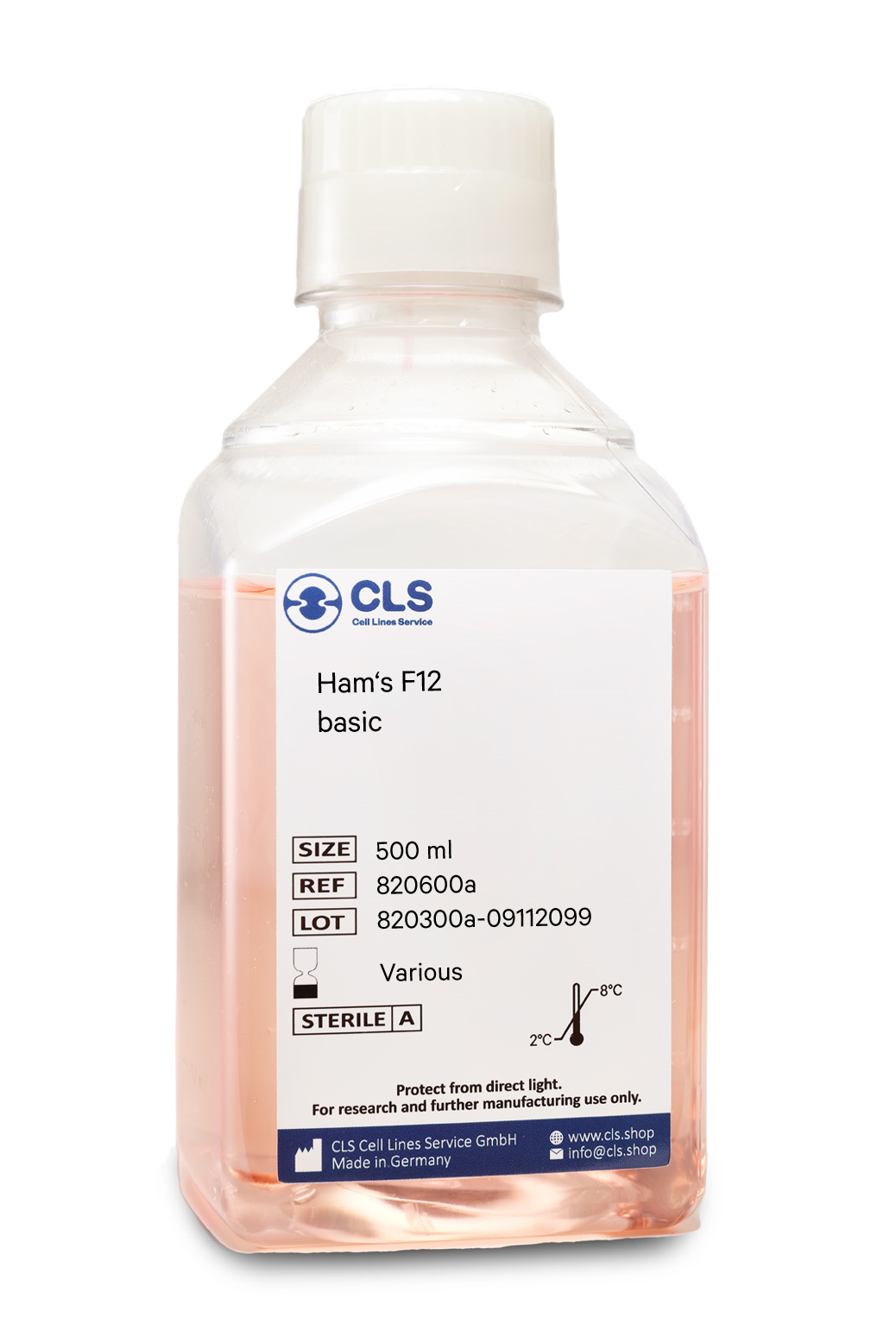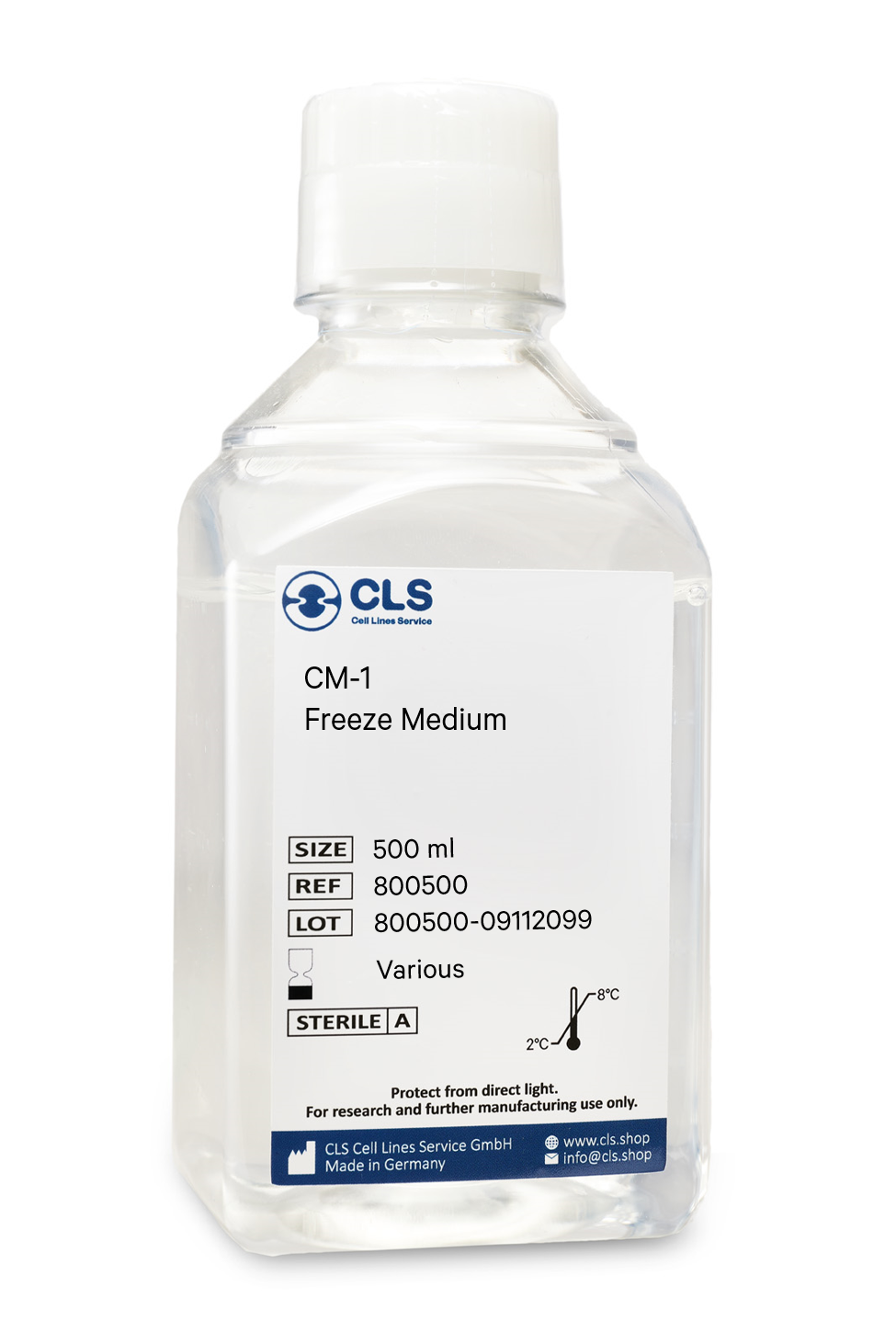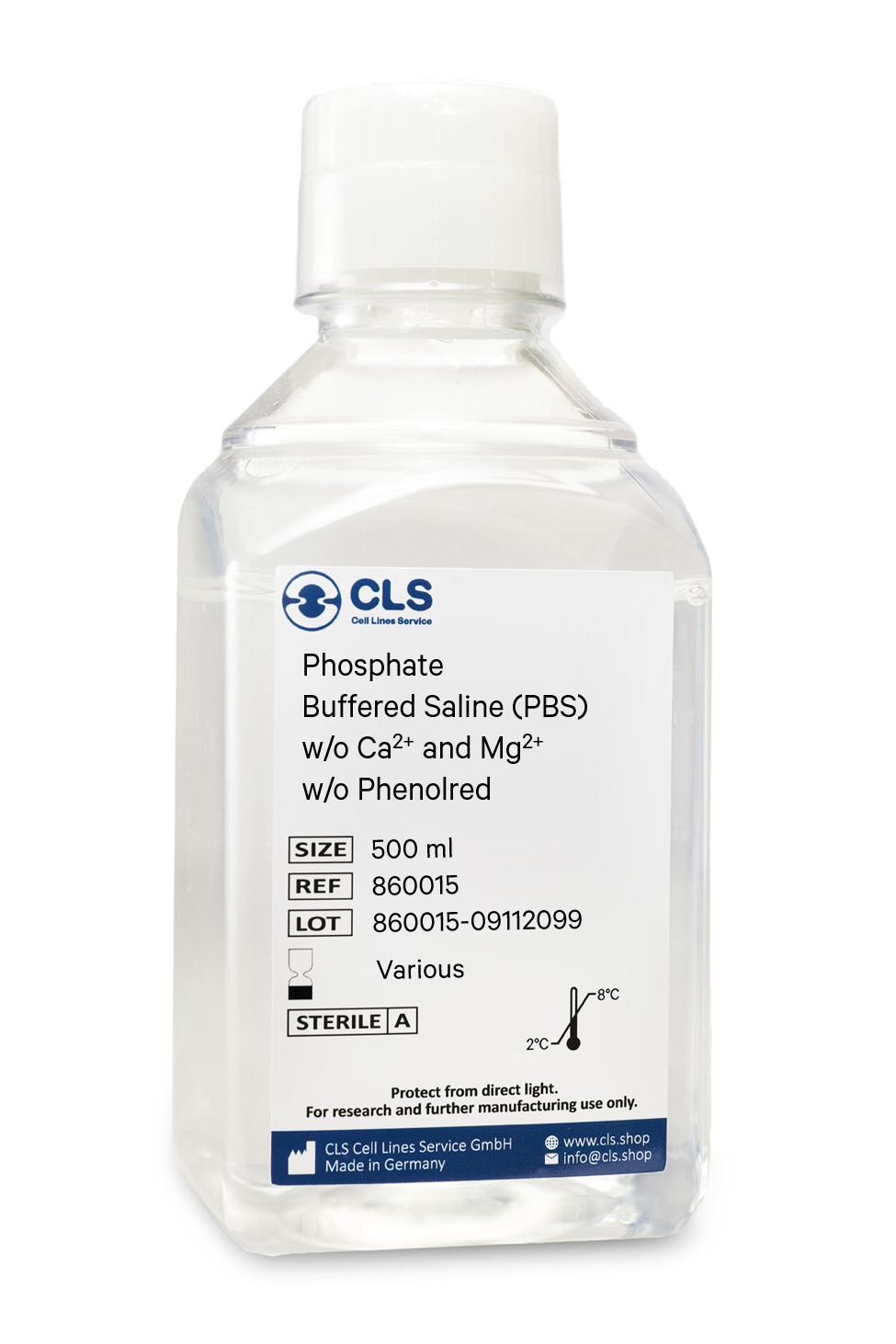KATO-III Cells
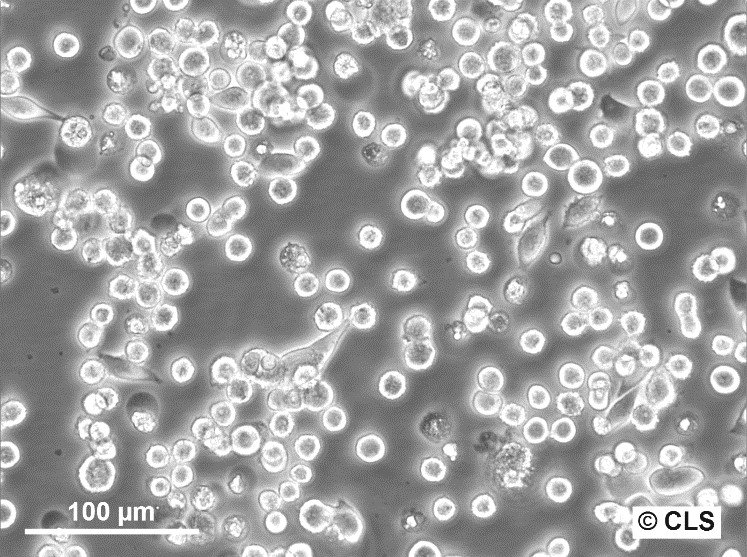
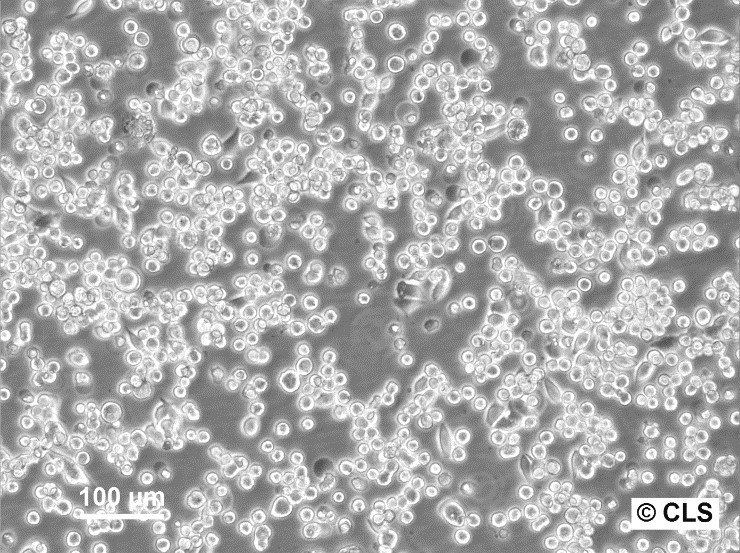






General information
| Organism | Human |
|---|---|
| Tissue | Stomach |
| Disease | Adenocarcinoma |
| Metastatic site | Pleural effusion |
| Synonyms | Kato III, Kato-III, KATO III, KATOIII, KatoIII, KATO 3, JTC-28, Japanese Tissue Culture-28 |
Characteristics
| Age | 57 years |
|---|---|
| Gender | Male |
| Ethnicity | Asian |
| Morphology | Spherical |
| Growth properties | Adherent/suspension |
Identifiers / Biosafety / Citation
| Citation | KATO-III (Cytion catalog number 300381) |
|---|---|
| Biosafety level | 1 |
Expression / Mutation
| Protein expression | p53 negative, CEA positive |
|---|---|
| Antigen expression | Blood Type B, Rh+ |
| Isoenzymes | PGM3, 1, PGM1, 1, ES-D, 1, AK-1, 1, GLO-1, 2, G6PD, B, Phenotype Frequency Product: 0.0742 |
| Tumorigenic | Yes, in cheek pouches of anti thymocyte serum treated hamsters, not tumorigenic in nude mice |
| Karyotype | The stemline chromosome number is hypotetraploid with the 2S component occurring at 6.2%. Nine markers were common to most S metaphases, four markers were less frequent. One (occasionally 2 copies) homogenous staining region (HSR) (t(11,HSR) was present in all metaphases examined, but no double minutes (DM) were detected (Sekiguchi 1978). |
Handling
| Culture Medium | Ham's F12, w: 1.0 mM stable Glutamine, w: 1.0 mM Sodium pyruvate, w: 1.1 g/L NaHCO3 (Cytion article number 820600a) |
|---|---|
| Medium supplements | Supplement the medium with 10% FBS |
| Passaging solution | Accutase |
| Doubling time | 36 hours |
| Subculturing | Gather the suspension cells in a 15 ml tube and gently wash the adherent cells with PBS lacking calcium and magnesium (use 3-5 ml for T25 flasks and 5-10 ml for T75 flasks). Apply Accutase (1-2 ml for T25 flasks, 2.5 ml for T75 flasks) ensuring full coverage of the cell layer. Allow the cells to incubate at room temperature for 10 minutes. Following incubation, combine and centrifuge both the suspension and adherent cells. After centrifugation, carefully resuspend the cell pellet and transfer the cell suspension into new flasks containing fresh medium. |
| Split ratio | A ratio of 1:2 to 1:8 is recommended |
| Seeding density | 2 x 10^4 cells/cm^2 will result in a confluent monolayer within 2 to 3 days. |
| Fluid renewal | Every 3 to 5 days |
| Freezing recovery | After thawing, plate the cells at 5 x 10^4 cells/cm^2 and allow the cells to recover from the freezing process and to adhere for at least 24 hours. |
| Freeze medium | CM-1 (Cytion catalog number 800100) or CM-ACF (Cytion catalog number 806100) |
| Handling of cryopreserved cultures |
|
Quality control / Genetic profile / HLA
| Sterility | Mycoplasma contamination is excluded using both PCR-based assays and luminescence-based mycoplasma detection methods. To ensure there is no bacterial, fungal, or yeast contamination, cell cultures are subjected to daily visual inspections. |
|---|---|
| STR profile |
Amelogenin: x,x
CSF1PO: 7,11
D13S317: 8,12
D16S539: 10,12
D5S818: 10,11
D7S820: 8,12
TH01: 7,9
TPOX: 11
vWA: 14,16
D3S1358: 15,16
D21S11: 30,31
D18S51: 12
Penta E: 13,18,19
Penta D: 13,14
D8S1179: 13,14
FGA: 23,24
|
| HLA alleles |
A*: 02:01:01, 02:07:01
B*: 15:01:01, 46:01:01
C*: 01:02:01, 03:03:01
DRB1*: 08:03:02, 15:01:01G
DQA1*: 01:02:01, 01:03:01
DQB1*: 06:01:01, 06:02:01
DPB1*: 02:01:02, 02:02:01
E: 01:03:02
|
Required products
One of its notable advantages is the ability to support cell growth without the need for serum supplementation. This eliminates potential interference caused by serum components, ensuring consistent and reliable experimental results. By providing a serum-free culture environment, Ham's F-12 Medium offers researchers greater control over their investigations.
Another key feature of Ham's F-12 Medium is its suitability for single-cell plating. This makes it an excellent choice for a variety of cell lines, including CHO cells, lung cells, and mouse L cells. The medium's optimized nutrient composition facilitates efficient attachment and growth of individual cells, enabling the establishment of homogeneous cell cultures with improved reproducibility.
Moreover, Ham's F-12 Medium has gained recognition as the preferred medium for the Clonal Toxicity Assay (CTA). This assay plays a critical role in assessing the cytotoxic effects of substances on cells. By utilizing Ham's F-12 Medium in the CTA, researchers can accurately evaluate the impact of various compounds or treatments on individual cells, providing valuable insights into toxicological profiles.
Quality control
pH = 7.2 +/
- 0.02 at 20-25°C.
Each lot has been tested for sterility and absence of mycoplasma and bacteria.
Maintenance
Keep refrigerated at +2°C to +8°C in the dark. Freezing and warming up to +37° C minimize the quality of the product.
Do not heat the medium to more than 37° C or use uncontrollable sources of heat (e.g., microwave appliances).
If only a part of the medium is to be used, remove this amount from the bottle and warm it up at room temperature.
Shelf life for any medium except for the basic medium is 8 weeks from the date of manufacture.
Composition
Components
mg/L
Inorganic Salts
Calcium chloride x 2H2O
44,00
Copper(II) sulfate x 5H2O
0,00
Iron (II) sulfate x 7H2O
0,83
Magnesium chloride x 6H2O
122,00
Potassium chloride
223,65
Sodium chloride
7599,00
di-Sodium hydrogen phosphateanhydrous
142,04
Zinc sulfate x 7H2O
0,86
Other Components
D(+)-Glucose anhydrous
1801,60
Hypoxanthine
4,08
Linoleic acid
0,08
DL-α-Lipoic acid
0,21
Phenol red
1,20
Putrescine x 2HCl
0,16
Sodium pyruvate
110,00
Thymidine
0,73
NaHCO3
1176,00
Amino Acids
L-Alanine
8,91
L-Arginine x HCl
210,70
L-Asparagine x H2O
15,01
L-Aspartic acid
13,31
L-Cysteine x HCl x H2O
35,12
L-Alanyl-L-Glutamine
217,30
L-Glutamic acid
14,71
Glycine
7,51
L-Histidine x HCl x H2O
20,96
L-Isoleucine
3,94
L-Leucine
13,12
L-Lysine x HCl
36,54
L-Methionine
4,48
L-Phenylalanine
4,96
L-Proline
34,53
L-Serine
10,51
L-Threonine
11,91
L-Tryptophan
2,04
L-Tyrosine
5,44
L-Valine
11,71
Vitamins
D(+)-Biotin
0,01
D-Calcium pantothenate
0,24
Choline chloride
13,96
Folic acid
1,32
myo-Inositol
18,02
Nicotinamide
0,04
Pyridoxine x HCl
0,06
Riboflavin
0,04
Thiamine x HCl
0,34
Vitamin B12
1,36
In biological research, the cryopreservation of mammalian cells is an invaluable tool. Successful preservation of cells is a top priority given that losing a cell line to contamination or improper storage conditions leads to lost time and money, ultimately delaying research results. Once the cells have been transferred from a cell growth medium to a freezing medium, the cells are typically frozen at a regulated rate and stored in liquid nitrogen vapor or at below -130°C in a mechanical deep freezer. The freeze medium CM-1 enables cryopreservation of cells at below -130°C (or in liquid nitrogen), essentially eliminating the need for an additional, costly ultralow freezer and eliminating time-consuming and demanding controlled rate freezing processes. Simply collect the cells, aspirate the growth medium, resuspend in CM-1, transfer to a cryovial, and store the vial at below -130 °C.
Long shelf-life
CM-1 is a serum-containing, ready-to-use cryopreservation medium that can be stored in the refrigerator for up to one year.
Trusted by hundreds of researchers
Our advanced cell freezing medium CM-1 is a market-leading product in Germany and Europe and is distinguished by numerous publications involving hundreds of different cell lines worldwide. We tested it with more than 1000 cell lines from our proprietary cell bank.
Optimized ingredients
CM-1 does contain serum products. Serum-containing cryopreservation mediums optimally protect the cells whilst being frozen and have the advantage of high recovery rates. As CM-1 has been tested with a multitude of cell lines, you can rest assured that your cells always recover well.
Contains FBS, DMSO, glucose, salts
Buffering capacity pH = 7.2 to 7.6
Applications & Validation
The cells preserved in our CM-1 freeze medium can be used for cell counting, viability and cryopreservation, cell culture, mammalian cell culture, gene expression analysis and genotyping, in vitro transcription, and polymerase chain reactions. Each batch's efficacy is evaluated using CHO-K1 cells. Each batch is tested for pH, osmolality, sterility, and endotoxins to ensure high quality.
Phosphate-buffered saline (PBS) is a versatile buffer solution used in many biological and chemical applications, as well as tissue processing. Our PBS solution is formulated with high-quality ingredients to ensure a constant pH during experiments. The osmolarity and ion concentrations of our PBS solution are matched to those of the human body, making it isotonic and non-toxic to most cells.
Composition of our PBS Solution
Our PBS solution is a pH-adjusted blend of ultrapure-grade phosphate buffers and saline solutions. At a 1X working concentration, it contains 137 mM NaCl, 2.7 mM KCl, 8 mM Na2HPO4, and 2 mM KH2PO4. We have chosen this composition based on CSHL protocols and Molecular cloning by Sambrook, which are well-established standards in the research community.
Applications of our PBS Solution
Our PBS solution is ideal for a wide range of applications in biological research. Its isotonic and non-toxic properties make it perfect for substance dilution and cell container rinsing. Our PBS solution with EDTA can also be used to disengage attached and clumped cells. However, it is important to note that divalent metals such as zinc cannot be added to PBS as this may result in precipitation. In such cases, Good's buffers are recommended. Moreover, our PBS solution has been shown to be an acceptable alternative to viral transport medium for the transport and storage of RNA viruses, such as SARS-CoV-2.
Storage of our PBS Solution
Our PBS solution can be stored at room temperature, making it easy to use and access.
To sum up
In summary, our PBS solution is an essential component in many biological and chemical experiments. Its isotonic and non-toxic properties make it suitable for numerous applications, from cell culture to viral transport medium. By choosing our high-quality PBS solution, researchers can optimize their experiments and ensure accurate and reliable results.
Composition
Components
mg/L
Inorganic Salts
Potassium chloride
200,00
Potassium dihydrogen phosphate
200,00
Sodium chloride
8,000.00
di-Sodium hydrogen phosphate anhydrous
1,150.00

